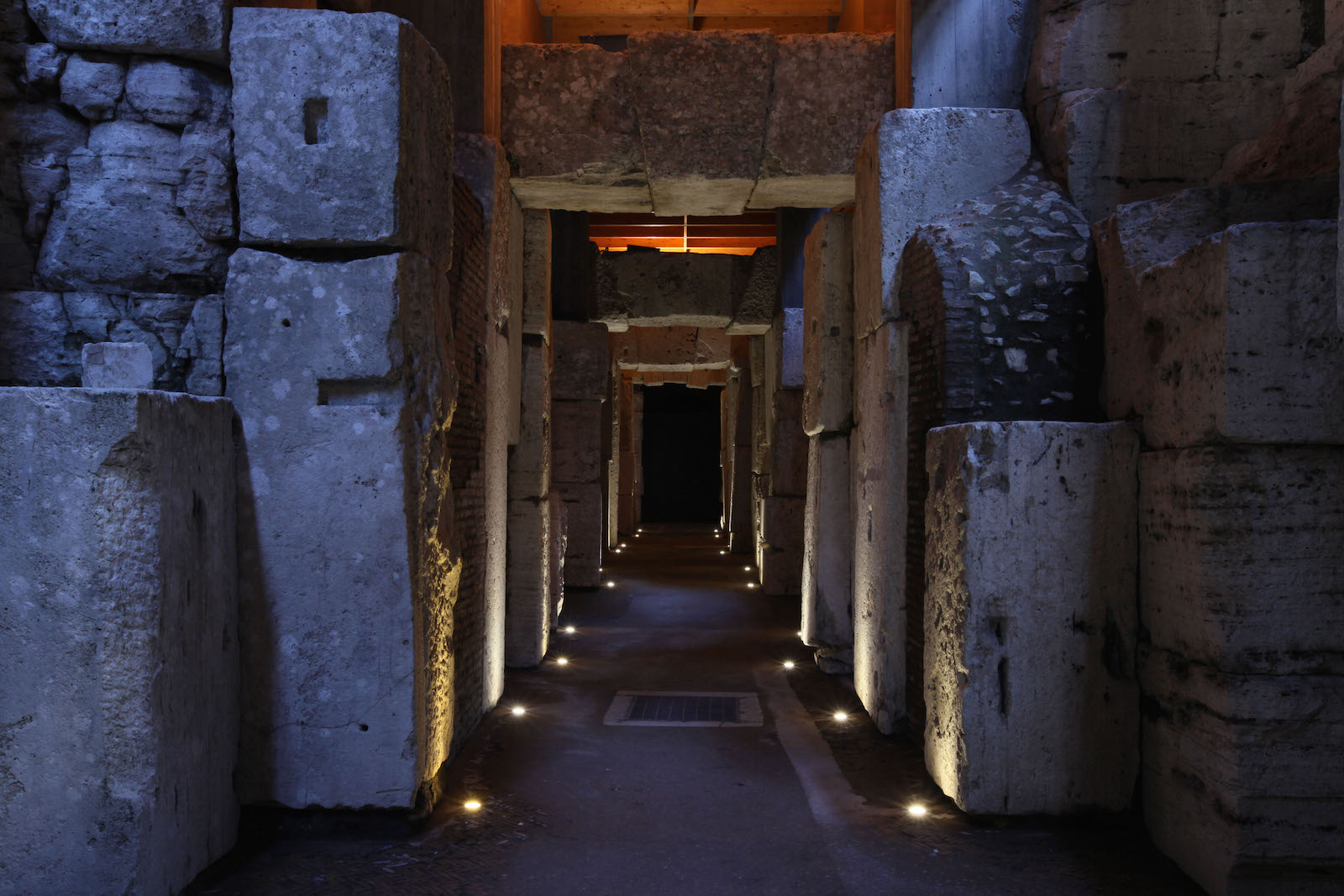The underground levels of the Colosseum
The Colosseum’s underground levels were where the various preparations made before each show took place. The “technical” apparati were covered by the arena floor, which was full of trapdoors: men and animals appeared unexpectedly, hoisted up by freight elevators operated through complex systems of winches and pulleys. Built in wood for the Colosseum’s inauguration, the underground levels were transformed into solid masonry under Domitian. At risk of collapses and fires due to their structural characteristics and the abundance of wood and rope, they were destroyed in the fire of 217 which seriously damaged the entire monument, causing its closure until 222. The underground levels were rebuilt for the Colosseum’s reopening and underwent various transformations in its last two centuries of activity, until they were completely filled in.
Today, the Colosseum underground stretches for half a hectare. Fourteen corridors are visible, situated symmetrically on either side of the large central passage. Each end leads to a “control room”: symmetrical spaces which housed large freight elevators, bordered by converging tunnels used as docks for the naumachie (naval battles) which took place in celebration of the monument’s inauguration. In fact, when the wooden arena was substituted with masonry, water shows were no longer held.
The underground’s levels are accessible to Full Experience ticket-holders and with guided tours




